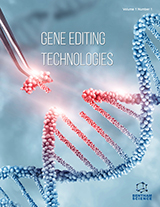Abstract
Soybean is a crucial crop that is recognised globally for its high-value
protein, vitamins, carbohydrates, fibre, and oils. However, the production of soybeans
is frequently influenced by biotic stress factors such as bean leaf beetles (Cerotoma
trifurcate), grasshoppers (Schistocerca americana), corn earworms (Helicoverpa zea)
and stinkbugs (Halyomorpha halys). However, these insect pests were discovered to be
both beneficial and harmful to crop growth and productivity, particularly, in soybeans.
According to the literature, the rise in temperature causes an increase in insect pest
populations, thereby severely influencing the growth, and yield quality of many crops.
Less precipitation also contributes to drought stress, and plants undergoing water-deficit stress produce fewer secondary metabolites rendering them vulnerable to attacks
by these insects. Similar effects were also revealed due to the rise in atmospheric CO2
levels that led to the adverse weather effects that caused enhanced reproduction and
spread of pest insects. This chapter, therefore, explores the role of climate change-induced factors, such as temperature, precipitation patterns and rising atmospheric CO2
on insects’ distribution, and reproductive patterns, as well as their subsequent influence
on crop growth and productivity in soybeans. The review also briefly discusses the
chemical, biological and biotechnological approaches of insect pest control that have
been employed effectively to combat losses of crop production. Side effects, cost
effectiveness and the ability of new biotechnological methods to target specific pests
are also discussed in this chapter.






















